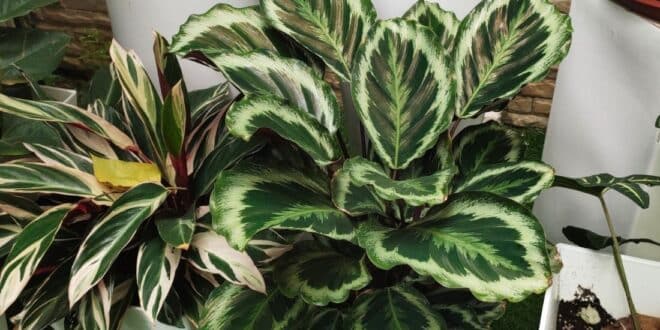Meet the Calathea
Calatheas, also known as Prayer Plants due to their unique habit of folding their leaves upward at night (a trait more pronounced in their close relatives, Marantas), are admired for their stunningly patterned and colorful foliage. Native to the tropical rainforests of the Americas, these plants are true living works of art, showcasing intricate designs in shades of green, pink, red, white, and purple.
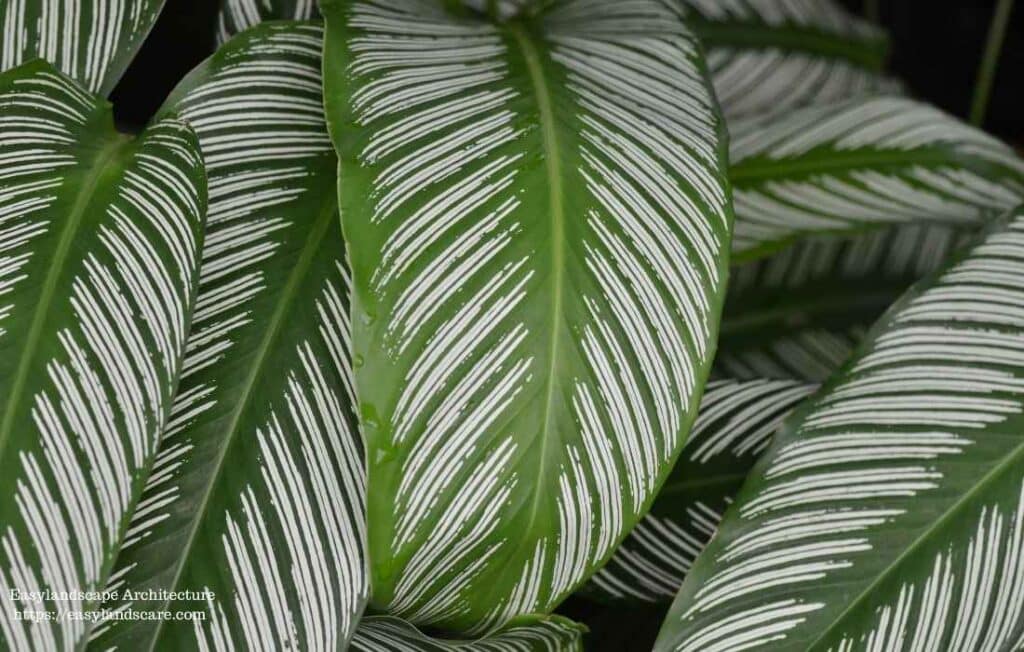
While their beauty is undeniable, Calathea plant care requires special attention to maintain their vibrant patterns and healthy growth. This comprehensive guide will provide you with all the essential information about Calathea plant care, covering light, watering, humidity, soil, pruning, propagation, and troubleshooting common issues. With the right care, you can enjoy the tropical elegance of Calatheas in your home for years to come.
Why Choose a Calathea Plant?
Calatheas are chosen not only for their striking foliage but also for their dynamic and engaging characteristics. Each variety offers unique and captivating patterns that can add a touch of exotic beauty to any indoor space.
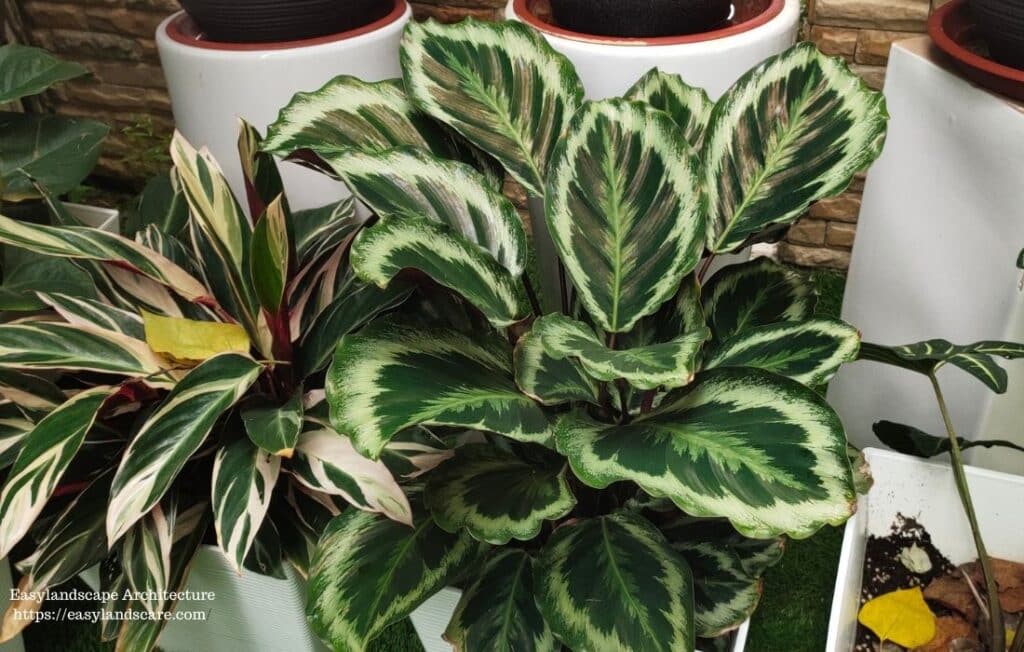
Benefits of Calathea Plants
- Exceptional Foliage: Calatheas boast some of the most intricate and colorful leaf patterns in the plant world.
- Dynamic Leaf Movements: Their leaves move throughout the day, responding to light levels, which adds an interactive quality to their presence.
- Air-Purifying Qualities: Like many houseplants, Calatheas help improve indoor air quality by filtering out toxins.
- Compact Size: Most Calathea varieties remain a manageable size, making them perfect for small spaces or tabletops.
- Exotic Appeal: Their tropical origins and vibrant patterns make them a standout addition to any plant collection.
Although Calathea plant care can be a bit more challenging than other houseplants, the rewards of nurturing these stunning plants far outweigh the effort.
Essential Tips for Calathea Plant Care
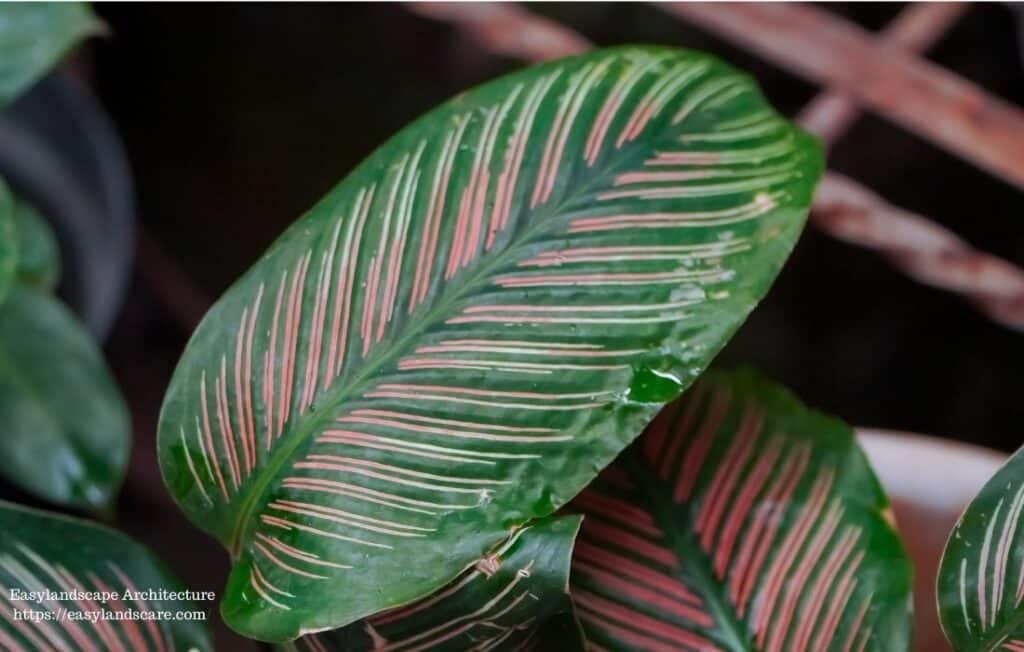
Light Requirements in Calathea Plant Care
Providing the right lighting is one of the most important aspects of Calathea plant care.
- Bright, Indirect Light is Key: Calatheas thrive in bright, indirect sunlight, similar to the dappled light they would receive under the canopy of a rainforest.
- Best Window Placement: East or north-facing windows are ideal, as they provide gentle, filtered light throughout the day.
- Protect from Harsh Sunlight: If placing near a west-facing or south-facing window, use sheer curtains to diffuse strong sunlight, which can scorch their delicate leaves and fade their vibrant colors.
- Avoid Insufficient Light: Without enough light, Calatheas may lose their vibrant colors and intricate patterns. Their growth may also slow, and they may appear less lively.
To ensure your plant thrives, rotate it occasionally so that all sides receive equal light exposure.
Watering and Moisture in Calathea Plant Care
Proper watering is crucial for Calathea plant care, as these plants are sensitive to both overwatering and underwatering.
- Keep Soil Consistently Moist: Calatheas prefer soil that is consistently moist but not waterlogged. Allow the top inch of soil to dry slightly before watering.
- Water Thoroughly: When watering, ensure the water reaches the roots by watering until it drains from the bottom of the pot. Discard any excess water to prevent root rot.
- Use Filtered or Distilled Water: Calatheas are sensitive to chemicals like fluoride and chlorine in tap water. Use room-temperature filtered, distilled, or rainwater to avoid brown, crispy leaf edges.
- Adjust Watering in Winter: During the cooler, less active winter months, reduce the frequency of watering as the plant’s growth slows.
Maintaining the right moisture level is key to keeping your Calathea healthy and vibrant.
Humidity Preferences
High humidity is essential for Calathea plant care, as these plants are native to tropical rainforests.
- Target Humidity Levels Above 60%: Dry air can cause crispy leaf edges and overall stress.
- Ways to Increase Humidity:
- Humidifier: The most effective way to maintain consistent high humidity.
- Pebble Tray: Place the pot on a tray filled with pebbles and water, ensuring the pot base is above the water level.
- Grouping Plants: Grouping plants together creates a microclimate with higher humidity.
- Misting: Mist the leaves regularly with room-temperature filtered water. However, misting alone is often not sufficient.
- Terrarium: Calatheas can thrive in a terrarium environment where humidity levels are naturally higher.
By mimicking their native humid environment, you can ensure your Calathea’s leaves remain lush and vibrant.
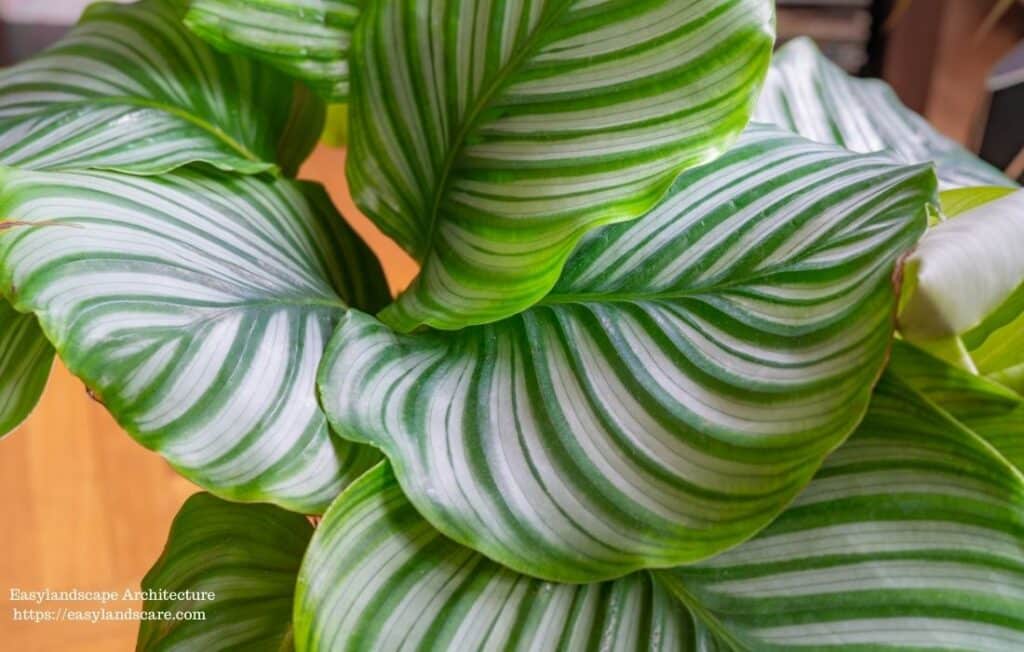
Temperature Preferences
Calatheas prefer warm, stable temperatures. Sudden fluctuations or exposure to cold drafts can stress the plant.
- Ideal Temperature Range: Keep the plant in a room with temperatures between 18-27°C (65-80°F).
- Avoid Cold Drafts and Heat Sources: Protect your Calathea from cold windows, heating vents, and air conditioners.
- Minimum Temperature: Avoid exposing the plant to temperatures below 15°C (60°F), as this can cause leaf damage and slow growth.
Maintaining a consistent temperature will help your Calathea thrive.
Soil Requirements in Calathea Plant Care
The right soil mix is essential for Calathea plant care, as it ensures proper drainage and aeration.
- Well-Draining, Slightly Acidic Mix: Use a potting mix formulated for tropical plants or a blend of peat moss, perlite, and orchid bark.
- Good Aeration: Ensure the soil is light and airy to prevent root rot.
- Repotting: Repot your Calathea every 1-2 years or when it outgrows its current container. Choose a pot that is only slightly larger than the previous one and has drainage holes.
Fertilizer
Fertilizing during the growing season can enhance the health and appearance of your Calathea.
- Light Feeding: Use a diluted, balanced liquid houseplant fertilizer every 2-4 weeks during spring and summer.
- Avoid Over-Fertilizing: Over-fertilizing can lead to salt buildup in the soil, causing brown leaf tips. Flush the soil occasionally to remove excess salts.
- Stop Fertilizing in Winter: Reduce or stop fertilizing during the plant’s dormant period in fall and winter.
Pruning
Pruning is an important part of Calathea plant care to maintain its health and appearance.
- Remove Yellow or Brown Leaves: Regularly trim off any yellowing, browning, or dead leaves at the base of the plant using clean scissors.
- Control Size: While pruning for size is rarely needed, you can trim back leggy growth to maintain the plant’s shape.
Propagation
Calatheas are primarily propagated through division during repotting.
- Steps for Propagation by Division:
- Gently remove the plant from its pot.
- Carefully separate the rhizomes into sections, ensuring each section has healthy roots and at least one or two leaves.
- Pot each division into its own container with fresh soil.
- Water lightly and place in a warm, humid location with indirect light.
Common Issues and Troubleshooting in Calathea Plant Care
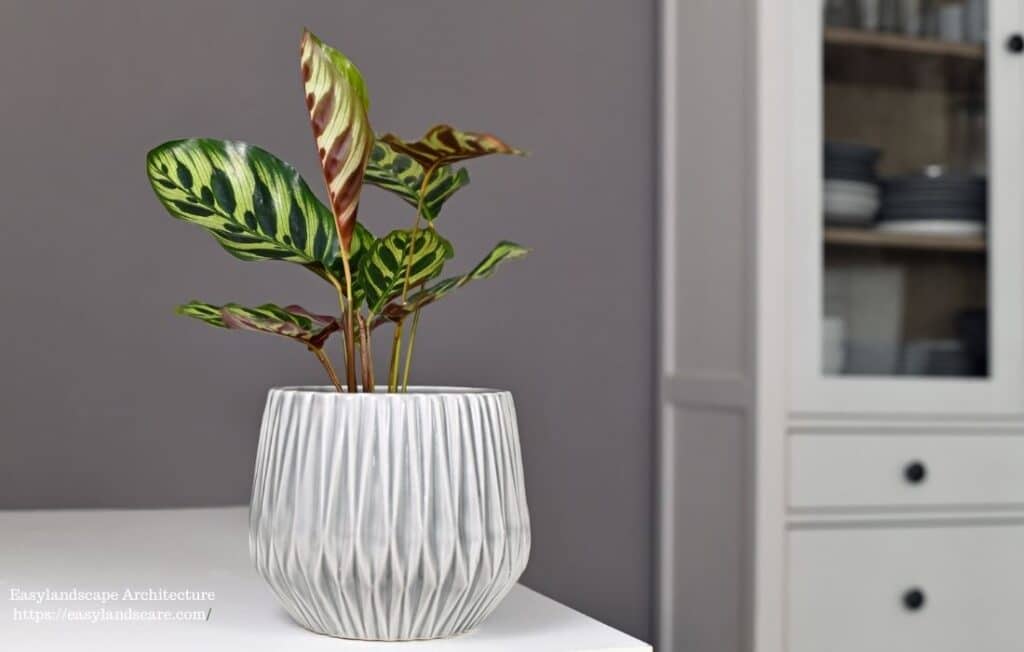
Even with proper care, Calatheas may encounter issues. Here’s how to address them:
- Brown, Crispy Leaf Edges:
- Low humidity is the most common cause. Increase humidity levels.
- Use filtered or distilled water to avoid chemical damage.
- Yellowing Leaves:
- Overwatering may be the cause. Allow the top inch of soil to dry before watering again.
- Check for nutrient deficiencies and fertilize during the growing season.
- Drooping Leaves:
- May indicate underwatering, overwatering, or exposure to cold drafts. Adjust care accordingly.
- Faded Colors or Loss of Pattern:
- Insufficient light is often the culprit. Move the plant to a brighter location with indirect light.
- Pests (Spider Mites, Mealybugs):
- Inspect leaves regularly and treat infestations with insecticidal soap or neem oil.
Tips for Successful Calathea Plant Care
- Provide bright, indirect light to maintain vibrant patterns.
- Use filtered, distilled, or rainwater to prevent leaf damage.
- Maintain high humidity levels and warm temperatures.
- Keep soil consistently moist but not soggy.
- Fertilize sparingly during the growing season.
- Regularly prune dead or damaged leaves.
Conclusion
Caring for a Calathea requires attention to detail, particularly regarding humidity, light, and water quality. However, the stunning and unique beauty of their foliage makes the extra effort incredibly rewarding. By following these Calathea plant care tips, you can mimic their tropical rainforest environment and enjoy their vibrant patterns and dynamic leaf movements in your home.
With proper care and a little patience, your Calathea will thrive, becoming a striking centerpiece in your indoor garden. Embrace the challenge of Calathea plant care, and you’ll be rewarded with a true living masterpiece! To discover other indoor plants as beautiful as the spider plant, we recommend reading our article on the Best Indoor Plants: Top 15 Picks and Care Tips

